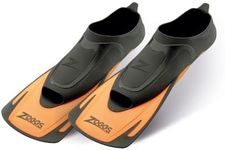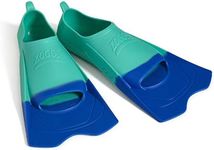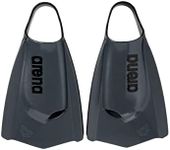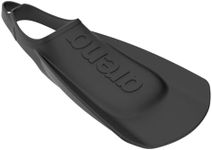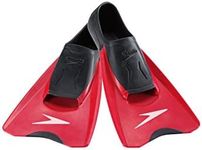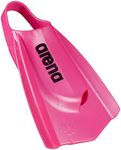Buying Guide for the Best Swim Training Fins
Swim training fins are an essential tool for swimmers looking to improve their technique, strength, and speed in the water. They help in building leg muscles, enhancing ankle flexibility, and improving overall swimming efficiency. When choosing swim fins, it's important to consider factors such as the type of swimming you do, your skill level, and your specific training goals. The right pair of fins can make a significant difference in your training effectiveness and comfort in the water.Fin LengthFin length is a crucial factor in determining the type of workout you'll get. Short fins are ideal for swimmers focusing on speed and technique, as they allow for a more natural kick and help improve stroke efficiency. They are great for competitive swimmers who want to refine their skills. Medium-length fins offer a balance between speed and strength training, making them suitable for intermediate swimmers. Long fins provide more resistance, making them perfect for building leg strength and endurance, often used by beginners or those focusing on fitness swimming. Choose the fin length based on your training goals: short for technique, medium for a balanced workout, and long for strength.
MaterialThe material of the fins affects their flexibility, durability, and comfort. Silicone fins are soft, flexible, and comfortable, making them a popular choice for long training sessions. They are also durable and less likely to cause blisters. Rubber fins are stiffer, providing more resistance and are often used for strength training. They are generally more affordable but can be less comfortable over extended periods. Consider silicone fins if comfort and flexibility are your priorities, and rubber fins if you're looking for more resistance and durability.
Foot Pocket DesignThe foot pocket design impacts how the fins fit and feel on your feet. Open-heel designs are adjustable and can accommodate a wider range of foot sizes, making them versatile and easy to put on and take off. Closed-heel designs offer a snug fit, providing better energy transfer and efficiency in the water, which is beneficial for competitive swimmers. If you prioritize comfort and ease of use, open-heel fins might be the best choice. For a more secure fit and better performance, especially in competitive settings, closed-heel fins are preferable.
BuoyancyBuoyancy in swim fins can affect your body position in the water. Neutral buoyancy fins do not significantly alter your natural position, making them ideal for technique training. Positive buoyancy fins can help lift your legs, which is beneficial for swimmers who struggle with keeping their legs up, aiding in improving body position and reducing drag. If maintaining a natural swimming position is important for your training, opt for neutral buoyancy fins. If you need assistance with body position, positive buoyancy fins can be helpful.
Blade ShapeThe shape of the fin blade influences the type of kick and propulsion you get. Straight blades are traditional and provide a straightforward kick, suitable for general training. Curved or angled blades can enhance propulsion and are often used for specific training purposes, such as improving speed or technique. If your focus is on general swimming and fitness, straight blades are a good choice. For targeted training to enhance speed or specific strokes, consider fins with curved or angled blades.





